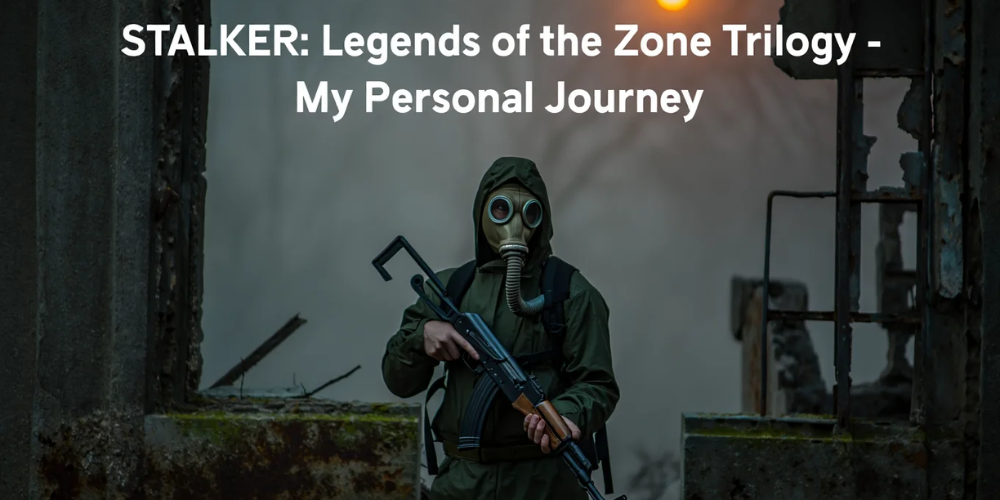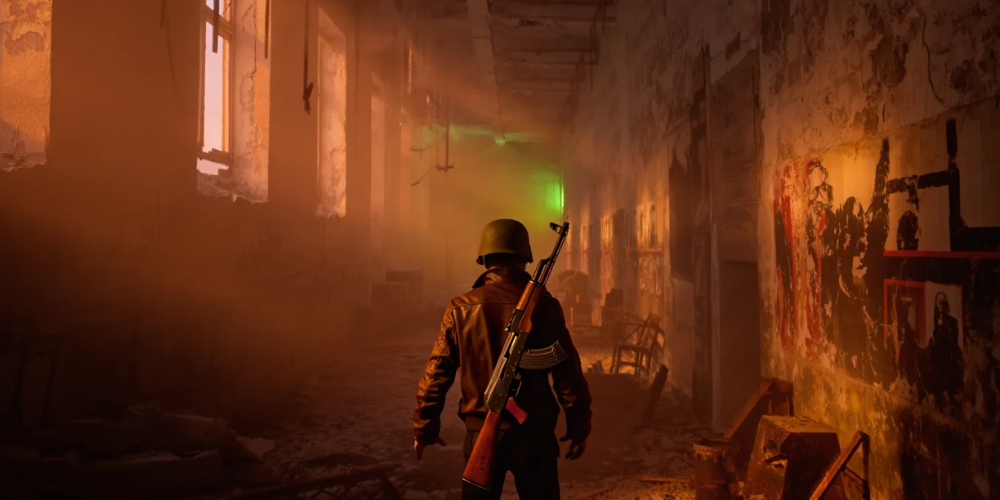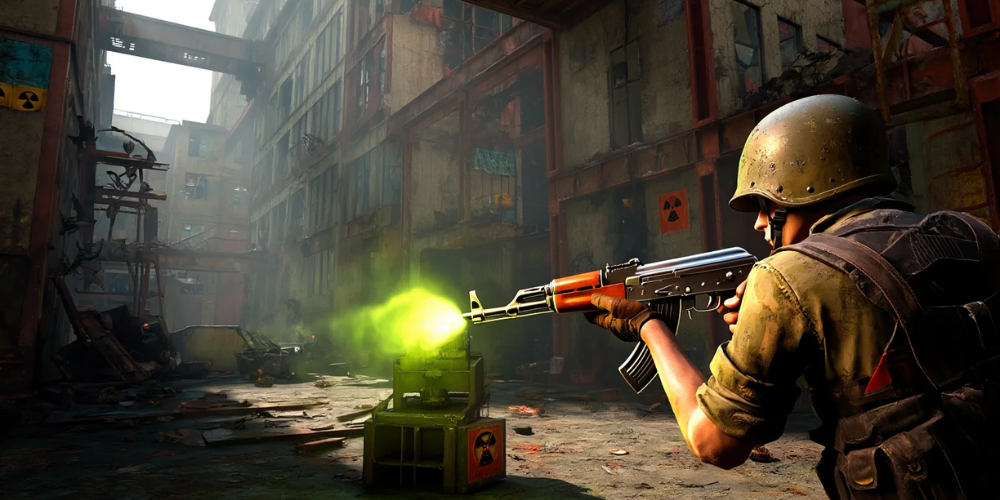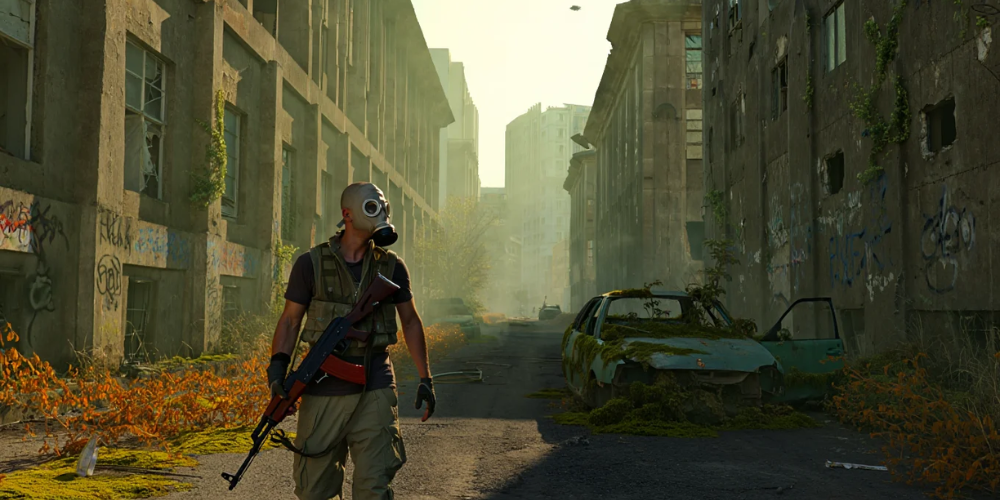STALKER: Legends of the Zone Trilogy - My Personal Journey
Jun 06, 2025

I still remember the first moment I stepped into the surreal world of the STALKER: Legends of the Zone Trilogy. It was as though I was wandering into a realm of endless possibilities and hidden dangers, where the landscape itself spoke volumes about a past steeped in mystery and human endeavor. My hands trembled with anticipation as I navigated through eerie corridors and vast barren landscapes, all rendered with an attention to detail that made each scene feel like a living painting. The environmental storytelling was not overt; rather, fragments of forgotten history lay scattered like relics waiting to be pieced together by a careful observer. The journey had just begun, and I felt an immediate connection with the atmosphere—a blend of foreboding mystery and rustic beauty that urged me to explore every nook and cranny of this post-apocalyptic wilderness.
Every step led me deeper into a world where the remnants of human civilization clashed with nature's persistence. The game succeeded in drawing me in with its immersive soundscapes and haunting visuals that stayed true to its roots in the STALKER universe. I recalled my own sense of wonder as I encountered artifacts and signs of life that spoke of survival against overwhelming odds. It was a delicate balance between dread and hope, and the narrative presented in the game beckoned me to immerse myself in its lore. The slow, deliberate pace allowed me to appreciate every eerie detail and provided time for introspection, a reminder of the consequences of humanity's dealings with nature and technology.
The Weight of the Post-Apocalyptic World
Stepping further into the Zone, I encountered a world that felt both desolate and powerful. The narrative was intricately woven with the remnants of a society that had once flourished before succumbing to the mysterious events that now defined its existence. I wandered through abandoned industrial sites, overgrown urban areas, and remote locations where nature had reclaimed what was once lost. Each environment conveyed a story, a narrative thread that connected the past to the present under the weight of time and change. This was more than a mere game setting—it was a living, breathing testament to the resilience of life and the inevitable change brought by time.
The rich storytelling in the game allowed me to feel the sorrow and hope intertwined in the landscape. Every dilapidated building, every overrun corridor whispered secrets of those who once lived there, and I could almost hear the laughter and cries of people long gone. My journey was not only about confronting dangers or challenging the unknown; it was also about acknowledging the history embedded within every structure and remembering that every ruin had a purpose once. The legends of the Zone were not mundane; they were filled with emotional layers that deepened the immersive experience, compelling me to explore further and understand the complex interplay between past missteps and future possibilities.

Immersive Gameplay Dynamics
The gameplay mechanics in the trilogy are something I found continuously engaging. The blend of stealth, resource management, and exploration created an atmosphere where every decision mattered. I found myself constantly weighing risks against rewards: moving carefully through dimly lit corridors, keeping an eye out for sudden disturbances, and making strategic choices about when to engage with the many challenges posed by the more hostile inhabitants of the Zone. These choices were not presented as binary options; instead, they were nuanced decisions that evolved as I familiarized myself with the interwoven mechanics and learned to adapt to the dynamic world around me.
The user interface was minimalist, allowing me to focus on the environment without constant distractions. The on-screen information felt integrated into the fabric of the narrative rather than a superficial overlay. Whether I was scavenging for supplies, repairing gear, or simply deciding on the next path to take, every action demanded a careful consideration of the surrounding dangers and rewards. I enjoyed how the game forced me to maintain a persistent sense of vigilance and strategic thought, turning each encounter into not just a test of reflexes but a puzzle to solve in its own right. The realistic management of resources and the need for precise navigation kept my adrenaline high and my mind engaged for the entire duration.
Nuances in Mission Design
One of the most memorable aspects of the STALKER: Legends of the Zone Trilogy for me was the way missions were designed. Unlike the linear paths of many games, the missions here presented multiple layers and unexpected twists that kept my interest at every turn. I encountered tasks that required a combination of stealth, quick thinking, and careful exploration. The objectives were cleverly interwoven with the lore of the Zone, forcing me to seek out artifacts, interact with various characters, and solve riddles that seemed to emerge naturally from the environment.
Each mission felt like a carefully crafted narrative within a larger tapestry. I remember moments when subtle hints in the dialogue or environmental cues would lead me to uncover side stories that enriched the main plot. The missions were not just about progressing through a sequence of events; they were about immersing myself in a layered storyline that held secrets, challenges, and unexpected encounters. There was a constant reminder that every decision could impact future events, and the consequences of my actions reverberated throughout the game’s world in ways that kept the experience both challenging and deeply personal.

Visual Splendor and Design
Visual design in the trilogy is an experience in itself. Every scene was meticulously crafted to evoke a sense of desolation mixed with an eerie beauty. My journey was often punctuated by breathtaking vistas: landscapes painted in hues of orange and deep blue, vaults of crumbling architecture, and natural elements reclaiming man-made structures. The visual effects were exemplary, drawing me into a world where every texture and shadow contributed to an atmosphere of palpable tension and quiet awe.
Walking through abandoned locations, I could appreciate how the lighting was used not only to enhance realism but also to guide the narrative. The interplay between light and shadow often felt symbolic of the morale and forces at work in the Zone. With every step, I noticed the artful detail that went into the decay and ruin, turning what could have been dull wastelands into canvases of historical narrative. The developers provided ample evidence that artistic integrity was as vital as gameplay innovation in crafting an experience that resonated on both emotional and intellectual levels. My eyes delighted in the natural progression of the times of day and the weather effects, which served as metaphors for the internal struggles faced by both the characters and the environment at large.
The Soundscape of Danger and Hope
No immersive game experience is complete without an equally compelling auditory landscape, and the soundtrack of the trilogy truly captivated me. As I traversed the forlorn paths of the Zone, the ambient music and sound effects evoked a mix of trepidation and melancholy that reflected the character of the world. The subtle creaks, distant echoes, and the whisper of winds against dilapidated walls created a soundscape that was both haunting and mesmerizing.
I found that the sound design was not merely an accompaniment to the visuals—it was a crucial narrative element that enhanced the immersion. The audio cues often signaled upcoming challenges or subtle details about the environment that text or visuals could not convey alone. In moments of solitude, as I moved cautiously through seemingly abandoned spaces, the music swelled with an intensity that felt almost spiritual. Each sound had a purpose, and every note seemed tailored to amplify the tension and uncertainty inherent in the Zone. This masterful layering of audio elements balanced perfectly with the gameplay, ensuring that even moments of respite were filled with an underlying current of anticipation.

Exploring the Open World Legend
The open world of the Zone is vast and filled with both overt dangers and hidden stories waiting to be discovered. Every path I took led me to entirely new environments, each with unique challenges and secrets. The open-ended design allowed me the freedom to diverge from the main narrative and embark on personal adventures—sometimes leading me to encounters with enigmatic characters, and other times to mysterious relics that hinted at ancient histories.
Roaming through dense forests overtaken by nature and urban ruins replete with the detritus of a lost era, I felt like a modern-day explorer charting uncharted territories. The game never forced me into a predetermined sequence, which made each journey uniquely personal. This freedom was accompanied by an underlying narrative that subtly pushed me towards larger events and broader story arcs. I appreciated the balance between guided narrative and organic exploration, as it fostered a deep sense of personal connection with the world. It was not uncommon to spend hours wandering through a seemingly unremarkable area, only to stumble upon a hidden passage or an artifact that would shed light on the forgotten past. The attention to detail in these open scenes was a constant reminder of the care invested in designing a world that felt both expansive and intimately alive.
Encounters and Tactical Engagements
Throughout my expedition, I encountered various adversaries and challenges that tested my strategic abilities. The game required a thoughtful approach to combat and conflict resolution, rewarding careful planning over rash decisions. Each encounter was crafted with an intricacy that demanded both quick reflexes and calculated thinking. I found myself adapting constantly based on the behavior patterns of my opponents and the environment’s nuances. Without the luxury of simplistic combat mechanics, every confrontation forced me to consider multiple factors—from vantage points and cover to the dynamic interplay of sounds and environmental cues.
What I particularly appreciated was how the developers balanced intensity with patience. Tactile engagements varied in difficulty, and the unpredictability of encounters made each skirmish a unique challenge. I had to rely on more than just my reflexes; I learned to integrate strategy, utilize the environment’s hidden assets, and even engage in diplomacy or diversion when the circumstances called for it. The tactical elements were woven seamlessly into the narrative fabric, making each conflict a subplot in the ongoing saga of survival and revelation. Each moment of tension brought an adrenaline rush that was tempered by the need to think clearly and adapt, reminding me that every interaction, no matter how brief, had the potential to alter the course of my journey.
Technical Framework and Performance
From a technical standpoint, the STALKER: Legends of the Zone Trilogy showcases a robust framework that supports an expansive and reactive world. I was particularly impressed by the fluid integration of physics, AI behavior, and environmental interactions. Even moments when I thought the game might falter under the weight of its open world were consistently remedied by smooth transitions and a reliable performance that rarely compromised on quality. The engine handled complex scenarios, including dynamic weather changes and the underlying danger of ambient radiation, with a surprising finesse that kept me fully engaged without a nagging concern about technical hiccups.
The technical details extended well into the artificial intelligence of both allies and adversaries. The inhabitants of the Zone were written with layers of behavioral complexity that rendered every encounter unpredictable and engaging. I could sense the developers' commitment to ensuring that technical performance was not merely a backdrop but a vital part of the overall narrative experience. The meticulous attention to detail in areas such as collision detection, environmental realism, and seamless load times allowed me to suspend my disbelief and fully inhabit the continuing saga of the Zone. Every technical element, from the smallest particle effects to large-scale environmental dynamics, felt designed with a clear vision—a testament to a development team that understood the importance of marrying innovative technology with a deep, immersive storyline.
Personal Encounter and Roleplaying Elements
My personal journey through the world of the Zone was enriched by the roleplaying elements that the game offered. As I navigated the labyrinthine corridors of derelict facilities and secret hideaways, I found that the decisions I made resonated deeply with the unfolding narrative. The capacity to shape my character’s persona—whether through cautious exploration, engaging dialogues with enigmatic locals, or the decisive choices made during high-stakes operations—made me feel truly invested in the game’s universe. I not only engaged with the immediate threats of the Zone but also with its wider cultural and philosophical implications, which left an indelible mark on my experience.
I relished moments when the game allowed me to diverge from the main storyline to explore character arcs in minute detail. Even minor choices, such as which resource to conserve for later use or whether to trust a mysterious stranger, had ripple effects that occasionally led me down unexpected and enriching narrative paths. Such roleplaying segments were not forced onto me; rather, they emerged organically as the fabric of the game’s world was laid bare. I found myself wondering about the origins of the factions that roamed the Zone, the unspoken codes of conduct that governed this desolate society, and even the moral quandaries inherent in surviving a harsh reality. The significance of these choices felt personal, intertwining my fate with that of a world built on legends and secrets.
Unexpected Encounters and Hidden Layers
One of the most astounding features of the trilogy is its ability to surprise even the most seasoned player with unexpected encounters and hidden layers of narrative depth. I recall moments when what appeared to be mundane wanderings transformed into profound revelations—the discovery of clandestine documents, whispers of experimental projects, and subtle references to long-forgotten truths buried beneath the desolation. These layers of hidden content transformed routine exploration into a treasure hunt for lore, enriching my understanding of the Zone and its multifaceted history.
Every time I felt I had uncovered all the secrets the Zone had to offer, the game would reveal another facet refusing to be pigeonholed into a single narrative strand. I encountered symbols and cryptic messages left by prior explorers, which recounted personal trials, ideological conflicts, and the undying human spirit that defied the odds. This intricate concealment of lore necessitated a persistent curiosity and a willingness to explore even the most remote corners of the map. The interplay between the overt main story and these subtle, almost hidden narratives created an experience that was as intellectually stimulating as it was emotionally engaging. Over time, I developed a genuine habit of revisiting areas that I initially passed over, hoping to catch a glimpse of an overlooked detail or an uncovered connection. Each discovery reinforced my belief that there was always more to comprehend in the Zone—a realm that rewarded patience, observation, and the relentless pursuit of truth.
Layered Narrative and World-Building Intricacies
As I continued my journey, the interplay between the layered narrative and meticulous world-building became increasingly evident. The storytelling was not confined to dialogues or scripted cinematics; instead, it was embedded in the architecture of the world itself. Every abandoned town, every forgotten military outpost, and every scattered piece of technology served as a narrative artifact that told its own story of past glory and inevitable decay. This careful construction of a believable ecosystem within the Zone allowed me to connect with the environment on a profoundly personal level.
The world-building went beyond conventional tropes: characters I encountered were not merely static figures but bearers of rich histories and personal stories. While traversing hazardous regions, I stumbled upon remnants of day-to-day life—a fading photograph pinned to a wall, fragments of handwritten notes, and even mechanical contraptions repurposed by the denizens of the Zone. These artifacts collectively formed a mosaic of human experience and resilience. I found that the narrative layers were woven in such a way that each discovery provoked further questions about the origins of the Zone and the fate of those who once thrived within its boundaries. It was an intricate dance between the known and the unknown, inviting me to immerse myself deeply and reflect upon the cyclical nature of hope and despair that defined the human condition in extraordinary circumstances.

Interrogating the Ethical Dimensions
During my prolonged engagement with the STALKER: Legends of the Zone Trilogy, I found that the game presented ethical dilemmas that forced me to consider the broader impact of my actions on the landscape and the characters within it. Every encounter and decision resonated with a sense of moral ambiguity that profoundly enriched the experience. The narrative refrained from offering easy answers; instead, it presented moral quandaries tied to survival, the greater good, and the price of discovery in a world where past tragedies still echoed in every crumbling structure.
There were moments when I had to decide whether to take advantage of a situation at personal risk or to act with compassion towards a fellow wanderer in distress. These choices carried weight, not just in terms of immediate consequences but also in the subtle evolution of the character I was forging. I discovered that my decisions influenced the relationships I built, the trust I earned from certain factions, and ultimately, the course of my own fate within the Zone. The intertwining of ethical considerations with gameplay mechanics elevated the overall experience into a reflective journey where survival was intimately linked with personal moral responsibility.
Dialogue and Character Interactions
Interlaced with the exploration of a vast, enigmatic open world were interactions with a diverse range of characters, each bringing their own histories and philosophies into the mix. I found that the in-game dialogue was crafted with a natural cadence that allowed it to reveal layers of personality and backstory without overwhelming the gameplay experience. The exchanges were filled with subtle hints, reminiscent of oral traditions passed down through generations, that hinted at a time when the Zone was as much a part of everyday life as it was a cautionary tale.
I became particularly fond of moments when conversations with other travelers gave me insights into hidden parts of the lore that I might have otherwise overlooked. Characters would mention long-standing whispers about secret locations, cautionary tales of past misadventures, and legends that had been handed down from one survivor to the next. These seemingly casual dialogues provided context and depth, painting a richer picture of a world where humanity had been forced to adapt in the face of overwhelming change. Whether it was a brief exchange at a makeshift camp or an in-depth discussion by the flickering light of an abandoned lighthouse, these interactions resonated with emotional authenticity. I realized that every conversation was a thread in the larger tapestry of the Zone’s history—a history that was as complex as the environment itself.








